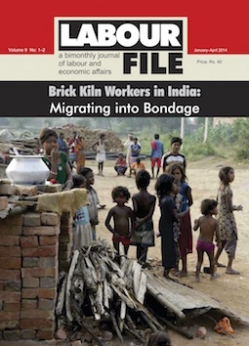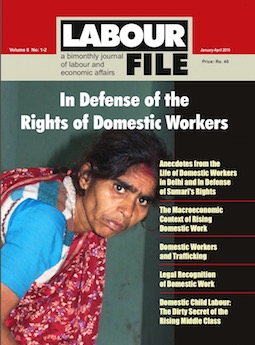Water Rights: A War Zone
Pradeep Narayanan is Researcher at the Centre for Education and Communication (CEC), New Delhi. (Pradeep Narayanan)
Water management has aroused widespread interest among national and global policy-makers, environmentalists and industries. This is due to two compulsions - efficiency and equity. While the first compulsion is the result of scarcity of water and the inability to meet the increasing demands, the second one is because of the vitality of water to one’s life. Water can’t be denied to any section of the society with due recognition of the fact that not all sections will be able to compete in the struggle for access to scarce water resources. These two factors that set apart water as the rightful need of the people also form the base for the capture of the resource by market forces.
The aftermath of the symptom of scarcity in the utilisation of any resource is the struggle to obtain ownership and use rights. The struggle to acquire ownership of water is broadly among the three stakeholders, namely, the State, the market and the community; however, it may be clarified that none of them could be treated as a homogenous entity. The granting of the right to any of these stakeholders involves some compromise between the two compulsions of efficiency and equity.
In the era of economic globalisation, the most prescribed way of managing water resources is through the establishment of a property rights regime. Though market economics assumes comparable bargaining power, complete information and rationality on the part of agents in transaction, undeniably different consumers wield a varying degree of power, and the management of resources is essentially a series of political settlements among different stakeholders. Water being an issue that has an immediate implication on the life and livelihood of the people, any action by the state or a multinational corporation that denies people the right to access water generally evokes an immediate response from the affected communities in the form of agitations and movements. The growing number of movements for water is evidence of this special bond that communities have with water.
Foreign Cola and Indian Water
The Hindustan Coca-Cola Beverages Private Limited established its bottling plant at Plachimada, Kerala four years ago. The plant is on 38 acres of land, which was formerly under paddy cultivation, a crop that generally grows in a region that has a large supply of ground water. This was a perfect location for the company because the primary raw material for its product is water. As a part of the deal, the Coca-Cola Company was allotted the land from where the company has the right to extract groundwater to manufacture its product. In the absence of any law to regulate the extraction of groundwater, an unlimited quantity of water is available to them for almost free of charge. According to CorpWatch, an organisation that keeps a watch on activities of corporations, the total cost of ground water for the plant in Plachimada comes out to 2.25 paise (US$0.00047) per kilolitres for spraying and cooling, 3 paise (US$0.00062) per kilolitres for domestic use and 7.50 paise (US$0.0016) per kilolitres for processing. Besides, Coke gets many other concessions including a glittering cashback of 15 per cent of its investment. In a scenario where there is a debate on the sale of the groundwater rights, these figures raise the question that can the rights be sold at such throw-away prices, especially when the communities are facing water shortage.
Ironically, while the Coca-Cola plant is allegedly extracting one-and-half millions of groundwater daily, local inhabitants are facing unprecedented water shortage. Their irrigation wells have dried up affecting agricultural production. Not enough water is available even for drinking and cooking purpose. Deterioration in the quality of groundwater made even the scarcely available water non-potable. All these reasons forced the local inhabitants to agitate against the indiscriminate mining of groundwater by the plant. This agitation received a major boost in April 2003 when the 15-member Perumatty Grama Panchayat Board refused renewal of the licence to operate as the company was “causing water shortage in the area through over-exploitation of groundwater sources”. With the village Panchayat representing the interests of the community, the struggle got transformed into a politico-legal battle between institutions for acquiring greater space in the management of resources.
Ownership of Water
The institution of groundwater rights is largely unregulated in
Can the state be trusted with the responsibility of safeguarding the community rights over water? Or shall the community be allowed to manage the vital natural resources by itself? According to a report by the Research Foundation for Science, Technology and Ecology, water is a sacred common heritage and based on traditions, local communities in
Community and Water
The community and the global capital are exercising influence on the state to realise their interests. The global capital is able to derive more concessions than the people who actually decide the fate of the government. Why should the political state that has the concern for legitimacy from the people act in such a manner? The foremost reason is the role of multilateral organisations like World Bank and International Monetary Fund in creating an ideological consensus namely Washington Consensus for building a ‘New World Order’ and thereby accelerating the process of economic globalization in which even the vital natural resources like water is commoditized. The iron grip of this ideology on the national economy is reflected in the State’s priority for the foreign direct investments by offering various concessions that include ‘rights’ over natural resources to investors.
Secondly, the State’s action and reaction is subject to its pursuit for more jobs for its people. For example, the possible loss of jobs was one reason why the Kerala government did not want to antagonise the Coca-Cola Company. The company claims that the plant provides 500 direct and 1000 indirect jobs. Ironically since the setting up of the plant, cultivation of paddy in over 600 acres of surrounding land has been abandoned due to water shortage severely affecting the employment opportunities of the adivasis who depend on wage labour for survival. However, the trade unions representing the organised workers were able to garner support of political parties in favour of the company as they would be the immediate losers if the plant is closed.
The third reason is the nexus between corporate officials, politicians and bureaucrats. The role of corruption in an MNC’s efforts to derive unfair and illegal concessions is not atypical. The “unauthorised” functioning of the company such as its violation of Kerala Land Utilization Act, statutory provisions of Health Department, illegal drawing of electricity and the ‘gift’ of the toxic sludge to the farmers as fertilizer did not elicit immediate response from the state government. As Anita Roddick, activist and founder of the Body Shop, writes, “When the villagers (of Plachimada) appealed to the government (of Kerala) to propose some fair system of water conservation and distribution, they were met with deafening silence. That did not surprise them; Coca-Cola has shared its wealth handsomely with local and national political officials, and has been exempted from any number of laws and restrictions.”
Unlike the global capital, which is a natural constituent of negotiation process, the community does not figure as a legal entity in water resource management. In the above case, it took one year of mass struggle for the community to persuade the village Panchayat about the adversity caused by the plant. However, within the existing legal structure, the village Panchayat remains the sole institution on which the marginalised community could exercise relatively greater influence than the capital, but it would be too early to argue for locating water rights in this institution.
The sustaining of Plachimada agitation for three years without any support from the organised politics denotes the strength of the social movements. There is an urgent need to settle the issue of location of water rights amicably taking into account first and foremost community interests or else social movements have the force to transform into real life battles.
Title of the Article: Water Rights: A War Zone
Name of the Journal: Labour File
Volume & Issue: 2 , 1
Year of Publication: 2004
Month of Publication: January - February
Page numbers in Printed version:
Weblink : https://labourfile.com:443/section-detail.php?aid=772




.jpg)
.jpg)


